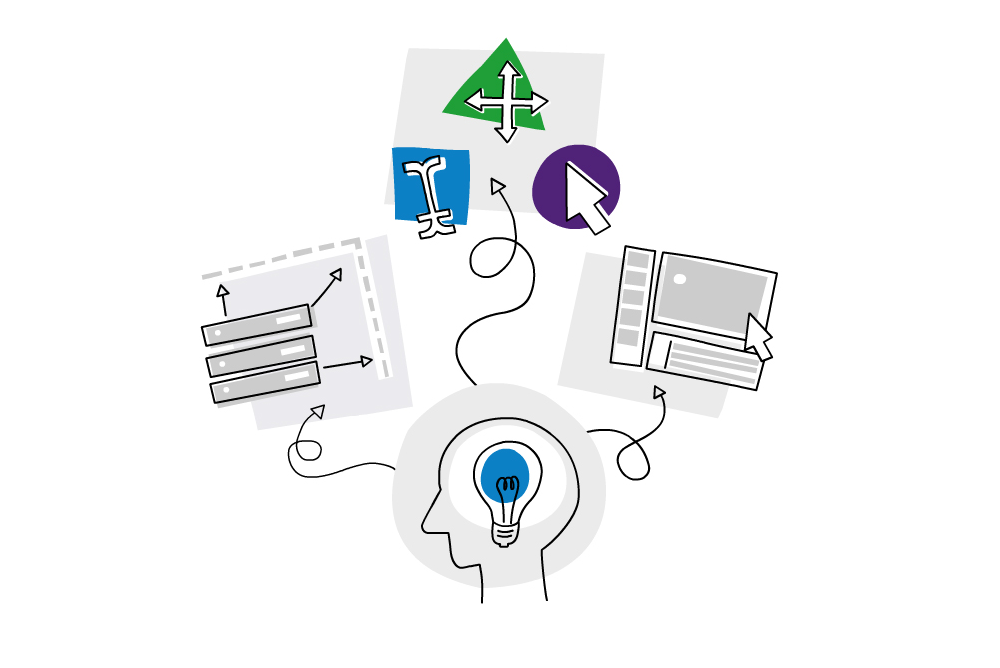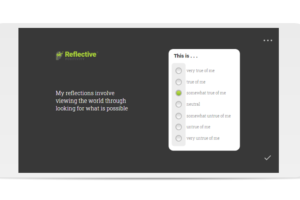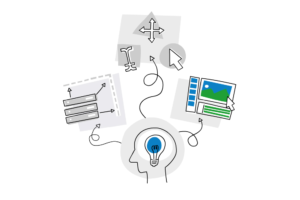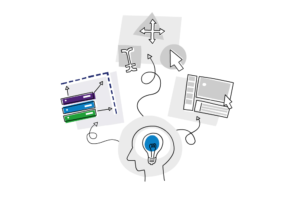
Functional Design in eLearning
When eLearning looks great but feels clunky, learners disengage. When content is strong but navigation is confusing, completion drops. And when Articulate Storyline modules are built with layers of unnecessary programming, organisations struggle to update them.
That’s where functional design comes in. At B Online Learning, we see functional design as the third critical pillar of eLearning – alongside instructional and visual design. It’s the part that ensures your courses aren’t just engaging, but also easy to use, scalable, and sustainable.
What Is Functional Design?
Functional design is about how a course works both for learners and for the organisation behind it.
- For learners, it means simple, effective navigation, clear prompts, and a smooth experience that feels effortless.
- For organisations, it means smart builds in tools like Articulate Storyline that avoid over-programming, use templates for consistency, and can be easily updated as needs evolve.
When functional design is overlooked, courses may look polished but are frustrating to use or too complex to maintain. Done well, it creates experiences that are seamless for learners and sustainable for businesses.
Functional Design for Learners: Seamless Experiences
Learners shouldn’t need instructions on how to take your course. Functional design ensures the experience feels natural.
Key Principles
Ease of use
- Simple menus and navigation.
- Clear next steps on every screen.
- Progress indicators that keep learners motivated.
Effective navigation
- Linear pathways for compliance or policy training.
- Branched pathways for decision-making scenarios.
- No unnecessary clicks or hidden traps.
Learner prompts
- Clear instructions before an interaction.
- Feedback after choices to reinforce learning.
- Reminders when completion is near.
A well-designed course “just works.” Learners focus on the content, not on figuring out the interface.
Functional Design for Organisations: Smarter Builds
Functional design also matters behind the scenes. A course that’s over-engineered may look clever but is difficult to scale or update.
Avoid Over-Programming
Many Storyline courses are packed with unnecessary triggers, custom navigation, and overly complex layers. This slows development, increases cost, and makes future updates harder. Learners don’t notice extra code — they notice whether the course is intuitive.
Our Certified Articulate Trainers emphasise building lean:
- Use built-in Storyline features before reinventing them.
- Keep triggers tidy and logical.
- Name objects and layers clearly for handover.
- Design with updates in mind, so anyone can maintain the file.
Scale with Templates
For organisations rolling out multiple modules, templates are a functional lifesaver.
- Consistency: Every module feels part of the same suite.
- Efficiency: Developers don’t waste time rebuilding.
- Maintainability: Updates are easier and quicker.
- Scalability: Large programs (10, 20, or even 60 courses) become achievable.
At B Online Learning, we’ve helped clients launch large-scale compliance and skills programs by applying template-driven functional design in Storyline and Rise.
Rise and Storyline: Functional Strengths
Both Articulate tools support functional design, but in different ways.
Rise 360
- Naturally simple, responsive, and template-based.
- Great for microlearning, policy conversions, and procedural content.
- Functional design here means choosing the right block, keeping layouts clean, and letting the tool’s structure do the heavy lifting.
Storyline 360
- Offers total control over navigation, interactivity, and design.
- Functional design here means resisting the urge to over-program, applying templates, and structuring builds for easy maintenance.
Sometimes, the best approach is using both: Rise for structure and scale, Storyline for complex interactivity. Together, they create a functional balance.
Functional Design in Practice
Let’s take a real-world scenario: an organisation needs 30 compliance modules.
Without functional design
- Developers create each course from scratch.
- Navigation is inconsistent across modules.
- Storyline builds are heavy with custom triggers.
- Updates take weeks and cost more than they should.
With functional design
- A Storyline template defines navigation, branding, and interaction styles.
- Rise provides a structured framework for consistent learner flow.
- Learners experience clear prompts, simple navigation, and smooth completion.
- Updating a policy or graphic is quick and scalable.
- The difference is efficiency, consistency, and sustainability.
Best Practices for Functional Design
- Design for simplicity: Use the leanest solution that achieves the goal.
- Think ahead: Build with maintenance in mind.
- Use templates: Consistency saves time and improves the learner experience.
- Prioritise navigation: Keep menus logical and completion rules clear.
- Guide the learner: Prompts and feedback should keep learners moving confidently.
Why Functional Design Is a Strategic Advantage
For learners, functional design delivers a smooth, intuitive experience that builds confidence. For organisations, it reduces cost, speeds development, and ensures courses are easy to maintain.
It’s not just a technical layer but a competitive edge. Functional design turns eLearning from a one-off build into a sustainable learning ecosystem.
Final Thoughts: Function Before Frills
Functional design doesn’t always get the spotlight, but it’s what makes eLearning truly work. By balancing seamless learner experiences with smart, maintainable builds, you create courses that are scalable, adaptable, and effective.
At B Online Learning, our expertise as Certified Articulate Trainers means we know how to apply functional design the right way, avoiding over-programming, using templates for scale, and keeping learners at the centre.
If you’re ready to simplify your builds and deliver seamless learning experiences, connect with us today.
Source link



